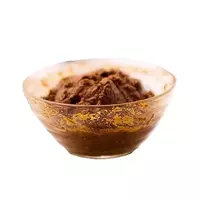Bumbu

Indonesian cuisine is known for its traditions in cooking, but at the same time it traditionally mixes East Asian cuisines (in particular, Indian and Chinese), primarily with the culinary features of local "island schools. " A significant number of traditional dishes for Indonesian cuisine are prepared based on seafood, and are also a mixture of meat with fruit and vegetable crops.
The main condiments used in Indonesia are cardamom, muscat, ginger, coriander and turmeric. It is worth noting that hot and hot chili peppers are not particularly popular in this cuisine, and therefore traditional dishes are much less sharp compared to the dishes characteristic of other peoples of this region. At the same time, spices and spices in Indonesian cuisine are used unusually masterly - the result is unique, and sometimes unique combinations of taste and aroma.
So, the mixture traditional for Indonesian cuisine is bumbu, which is fresh finely chopped spicy herbs. In essence, bumbu (bumbu) is an unusually fragrant paste made on the basis of various fragrant spices. True, it is worth noting that the composition of the mixture may depend on which dish it is planned to serve.
The main and constant component of the bumbu is onions. In addition, this paste contains ginger, hot pepper, lemon sorghum, Kaffir lime leaves, galangal root, garlic, and Indonesian bay leaf. As a rule, this mixture is made manually, grinding all the components in a special mortar. Sometimes dry spices are also added to the composition of the bumbu - for example, coriander seeds or black peppers. In addition, on the island of Java and Bali, a fried shrimp paste "trassi" is included in the bumbu.
Initially, this fragrant mixture was made in Indonesia and today bumbu acts as the main seasoning of traditional Indonesian cuisine. Interestingly, in Holland, bumbu is called "boemboe, " while the inhabitants of Bali are used to calling this spicy paste "jangkap. "
To the table, the bumbu is served in a kachetsva snack both raw and frying the paste for a couple of minutes. In addition, it is often added to meat dishes, various sauces, gravy and stewed meals. This spicy mixture is embedded in vegetable dishes that are cooked in coconut milk or a small amount of water. In order to significantly improve the taste and give a subtle savoury note to the paste, the bumbu grates the meat before frying and baking.
boombu 0 kCal
Energy value of bumbu (Ratio of proteins, fats, carbohydrates - ju):
Proteins: 0 g (~ 0 kCal)
Fats: 0 g (~ 0 kCal)
Carbohydrates: 0 g (~ 0 kCal)
 Español
Español Français
Français Português
Português Русский
Русский 简体中文
简体中文 繁體中文
繁體中文 日本語
日本語 한국어
한국어 العربية
العربية Türkçe
Türkçe Қазақ
Қазақ Deutsch
Deutsch Italiano
Italiano Українська
Українська
